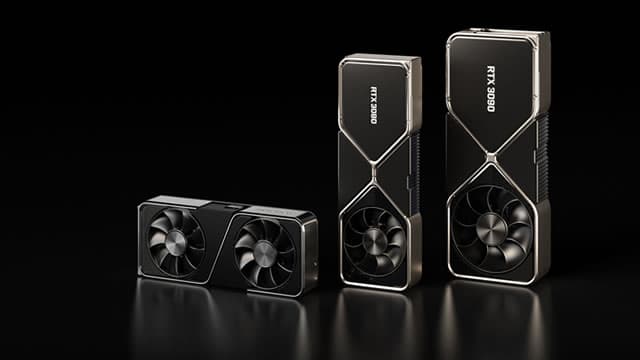Nvidia breakout puts $4 trillion market value within reach

Summary
Nvidia is on the cusp of reaching a $4 trillion market capitalization, two years after hitting $1 trillion. This remarkable growth is driven by its dominant position in AI, fueled by insatiable demand for its GPUs and its comprehensive software ecosystem. While facing competition from AMD, Intel, and cloud providers' custom chips, Nvidia maintains a strong lead due to its first-mover advantage and continuous innovation. For investors, Nvidia's long-term prospects are tied to the ongoing AI revolution, but valuation and competitive dynamics remain key considerations.
Nvidia's Historic Ascent: Eyeing the $4 Trillion Mark
Two years after Nvidia Corp. made history by becoming the first chipmaker to achieve a $1 trillion market capitalization, an even more remarkable milestone is within its grasp: becoming the first company to reach $4 trillion. This extraordinary trajectory underscores Nvidia's pivotal role in the artificial intelligence (AI) revolution and its unparalleled dominance in the high-performance computing sector.
The AI Catalyst: Fueling Unprecedented Growth
Nvidia's meteoric rise is inextricably linked to the explosion of generative AI. Its Graphics Processing Units (GPUs) have become the de facto standard for training and deploying complex AI models, from large language models (LLMs) to advanced image recognition systems. The demand for these specialized chips has far outstripped supply, allowing Nvidia to command premium prices and achieve staggering profit margins. This insatiable demand from hyperscale cloud providers, enterprises, and research institutions has been the primary engine driving its market capitalization skyward.
Beyond Chips: A Full-Stack AI Powerhouse
While its hardware prowess is undeniable, Nvidia's strategic vision extends far beyond silicon. The company has meticulously built a comprehensive software ecosystem around its GPUs, including CUDA (Compute Unified Device Architecture), cuDNN (CUDA Deep Neural Network library), and various AI frameworks. This full-stack approach creates a powerful moat, making it incredibly difficult for competitors to dislodge Nvidia from its entrenched position. Developers and researchers are deeply invested in the CUDA platform, fostering a virtuous cycle of innovation and adoption that further solidifies Nvidia's market leadership.
Market Dynamics and Competitive Landscape
Nvidia's journey to $4 trillion is not without its challenges. Competitors like AMD and Intel are aggressively pursuing their own AI chip strategies, while major cloud providers such as Amazon (AWS Inferentia/Trainium), Google (TPUs), and Microsoft are developing custom AI accelerators. However, Nvidia's first-mover advantage, superior performance, and robust software ecosystem have allowed it to maintain a significant lead. The sheer scale of investment required to compete effectively in this space, coupled with Nvidia's continuous innovation cycle, presents formidable barriers to entry for new players.
Supply Chain Resilience and Geopolitical Factors
Managing a complex global supply chain, particularly for advanced semiconductors, remains a critical factor. Nvidia has demonstrated remarkable resilience in navigating supply constraints, but geopolitical tensions, particularly concerning Taiwan Semiconductor Manufacturing Company (TSMC), a key foundry partner, introduce an element of risk. Diversification of manufacturing capabilities and strategic partnerships will be crucial for sustained growth.
Investment Implications and Future Outlook
For investors, Nvidia's potential to reach $4 trillion signifies not just a valuation milestone but a testament to its long-term growth prospects. The AI revolution is still in its early stages, and Nvidia is positioned at its epicenter. Continued advancements in AI, coupled with the expansion into new markets like robotics, autonomous vehicles, and the metaverse, offer substantial avenues for future revenue generation.
Key Considerations for Investors:
- Valuation: While growth is strong, investors must carefully assess valuation metrics. Nvidia's stock often trades at a premium, reflecting its dominant position and growth potential.
- Competition: Monitor competitive developments closely. While Nvidia holds a strong lead, the AI chip market is dynamic and attracts significant investment.
- Innovation Pipeline: Keep an eye on Nvidia's R&D investments and new product announcements. Sustained innovation is key to maintaining its competitive edge.
- Market Adoption: Track the broader adoption of AI across industries. Increased enterprise and consumer use of AI applications will directly benefit Nvidia.
Nvidia's pursuit of the $4 trillion market cap is more than just a financial headline; it's a powerful indicator of the transformative impact of AI on the global economy and Nvidia's indispensable role in shaping that future. As the company continues to push the boundaries of computing, its journey remains a compelling narrative for the financial markets.